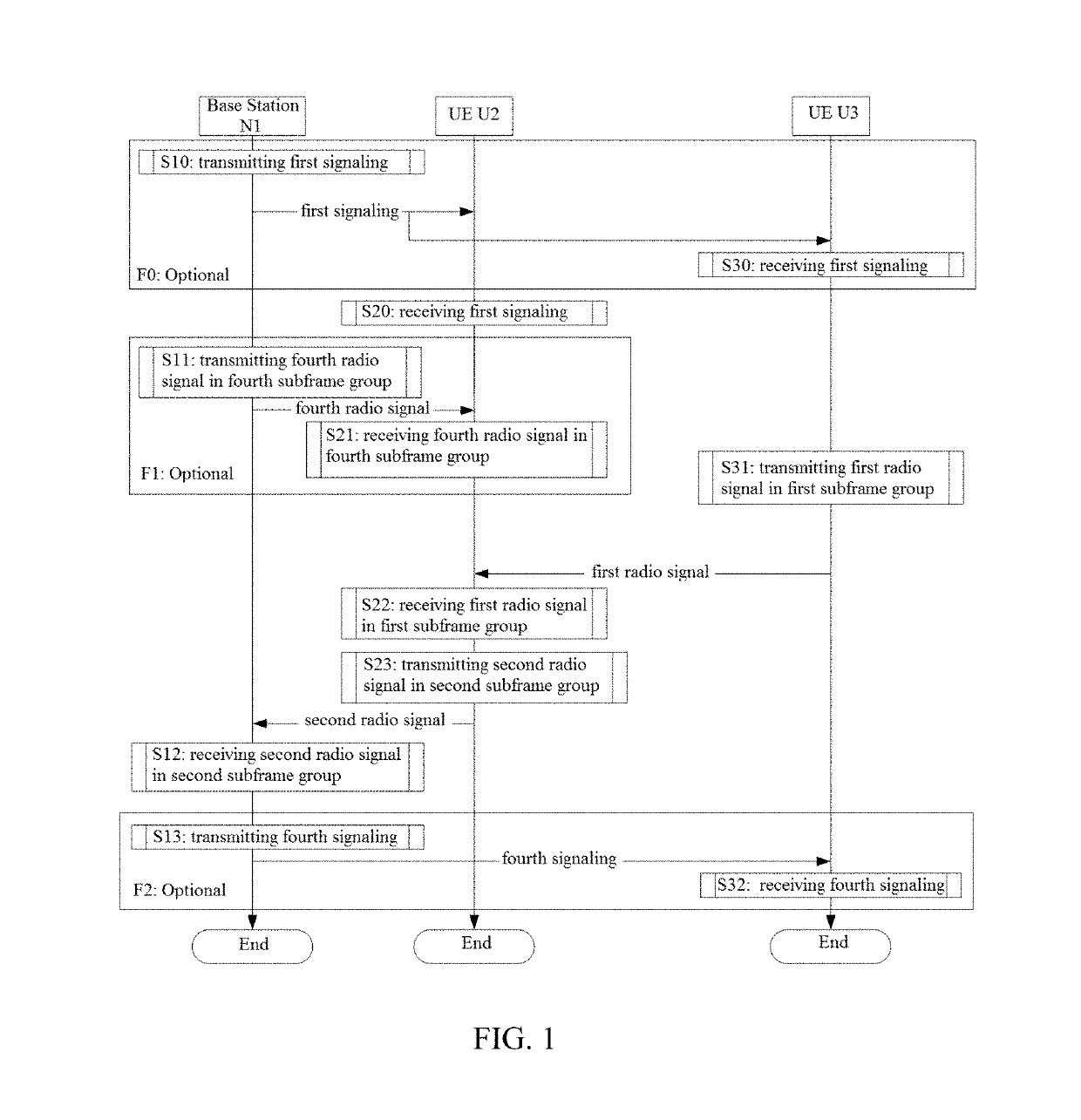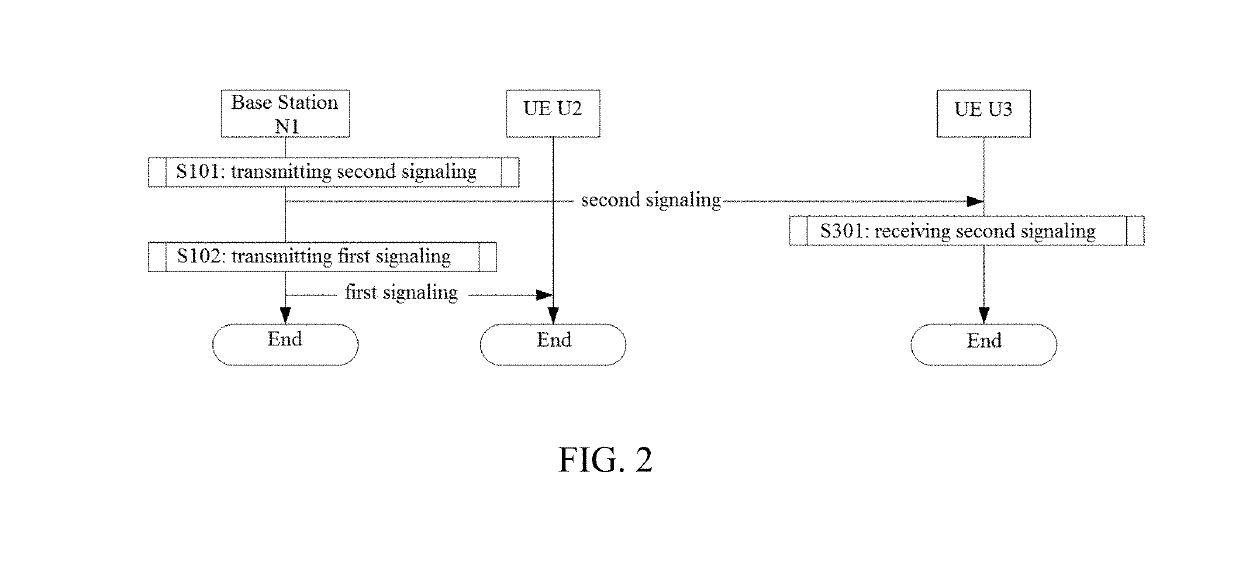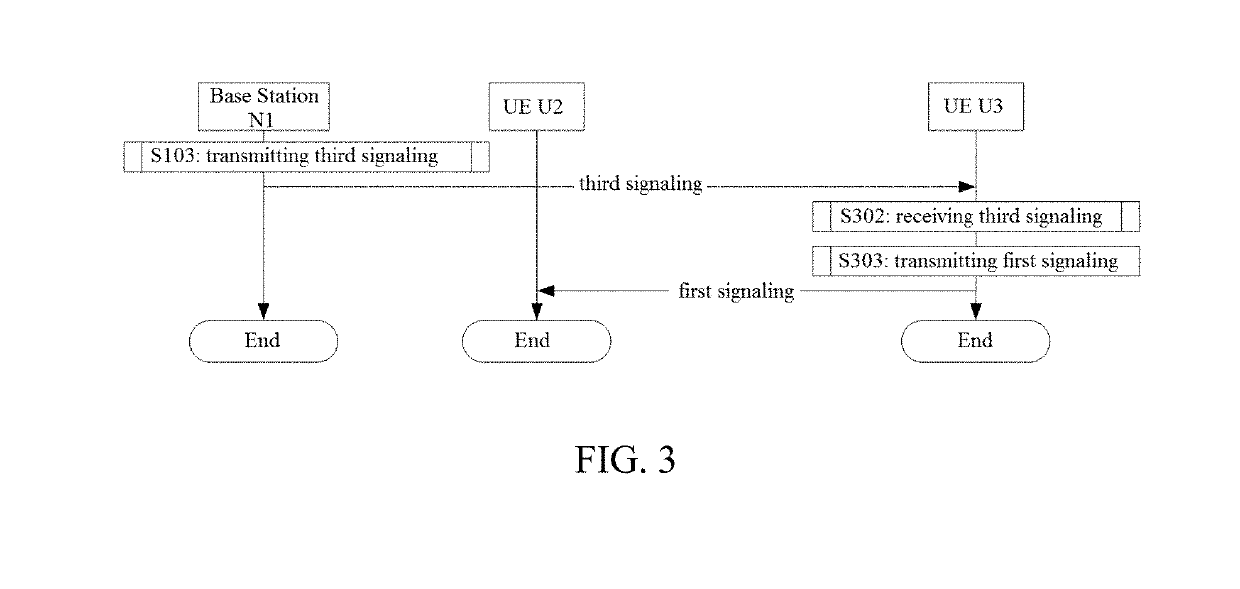Method and device for narrowband cellular communication
- Summary
- Abstract
- Description
- Claims
- Application Information
AI Technical Summary
Benefits of technology
Problems solved by technology
Method used
Image
Examples
embodiment 1
[0231]Embodiment 1 illustrates an example of a flowchart of relay transmission, as shown in FIG. 1. In FIG. 1, the base station N1 is a maintenance base station for a serving cell of the UE U2, the base station N1 is also a maintenance base station for a serving cell of the UE U3, and steps marked in boxes F0 to F2 are optional.
[0232]The base station N1 transmits a first signaling in S10, transmits a fourth radio signal in a fourth subframe group in S11, receives a second radio signal in a second subframe group in S12, and transmits a fourth signaling in S13.
[0233]The UE U2 receives the first signaling in S20, receives the fourth radio signal in the fourth subframe group in S21, receives a first radio signal in a first subframe group in S22, and transmits the second radio signal in the second subframe group in S23.
[0234]The UE U3 receives the first signaling in S30, transmits the first radio signal in the first subframe group in S31, and receives the fourth signaling in S32.
[0235]In...
embodiment 2
[0239]Embodiment 2 illustrates an example of a flowchart of the transmission of a second signaling, as shown in FIG. 2. In FIG. 2, the base station N1 is a maintenance base station for a serving cell of the UE U2, and the base station N1 is also a maintenance base station for a serving cell of the UE U3.
[0240]The base station N1 transmits a second signaling in S101, and transmits a first signaling in S102.
[0241]The UE U3 receives the second signaling in S301.
[0242]In Embodiment 2, the first signaling is used by the UE U2 to determine the first subframe group and the second subframe group. The second signaling is used by the UE U3 to determine the first subframe group and the second subframe group.
[0243]In one subembodiment, the first signaling and the second signaling are DCIs respectively.
[0244]In one subembodiment, the steps shown in FIG. 2 represent the steps marked by F0 shown in FIG. 1.
embodiment 3
[0245]Embodiment 3 illustrates an example of a flowchart of the transmission of a third signaling, as shown in FIG. 3. In FIG. 3, the base station N1 is a maintenance base station for a serving cell of the UE U2, and the base station N1 is also a maintenance base station for a serving cell of the UE U3.
[0246]The base station N1 transmits a third signaling in S103.
[0247]The UE U3 receives the third signaling in S302, and transmits a first signaling in S303.
[0248]In Embodiment 3, the third signaling comprises scheduling information, and the first signaling comprises the scheduling information included in the third signaling; and the scheduling information comprises at least one among information relevant to the first subframe group, frequency domain resources occupied by the first radio signal in the first subframe group, a Modulation and Coding Scheme of the first radio signal, a Redundancy Version of the first radio signal, a HARQ process number for the first radio signal, and a New...
PUM
 Login to View More
Login to View More Abstract
Description
Claims
Application Information
 Login to View More
Login to View More - R&D
- Intellectual Property
- Life Sciences
- Materials
- Tech Scout
- Unparalleled Data Quality
- Higher Quality Content
- 60% Fewer Hallucinations
Browse by: Latest US Patents, China's latest patents, Technical Efficacy Thesaurus, Application Domain, Technology Topic, Popular Technical Reports.
© 2025 PatSnap. All rights reserved.Legal|Privacy policy|Modern Slavery Act Transparency Statement|Sitemap|About US| Contact US: help@patsnap.com



